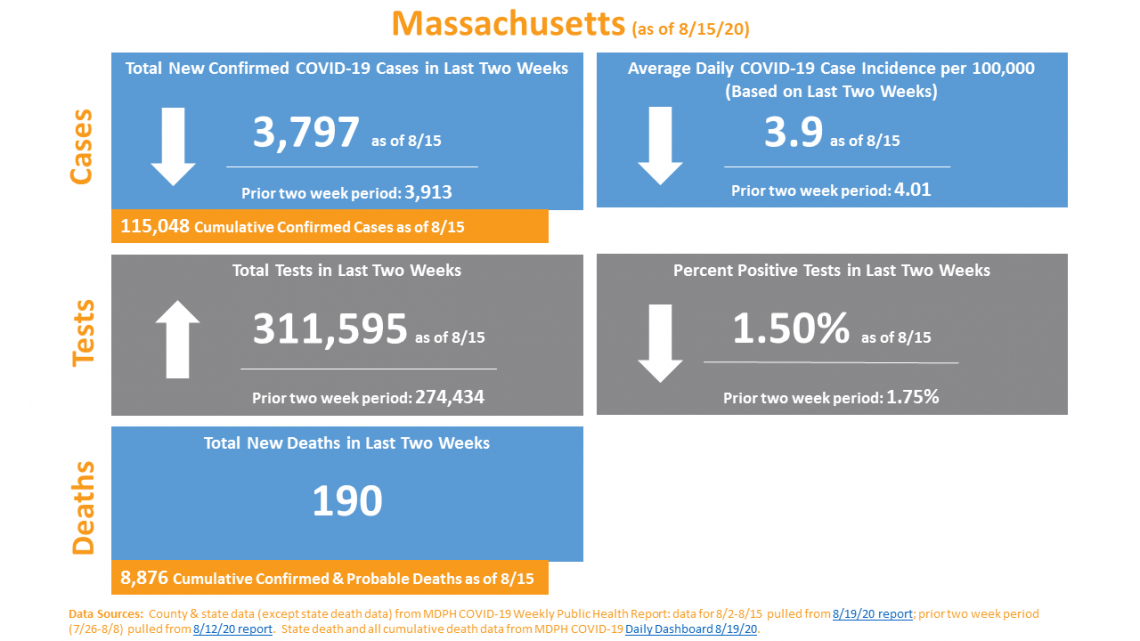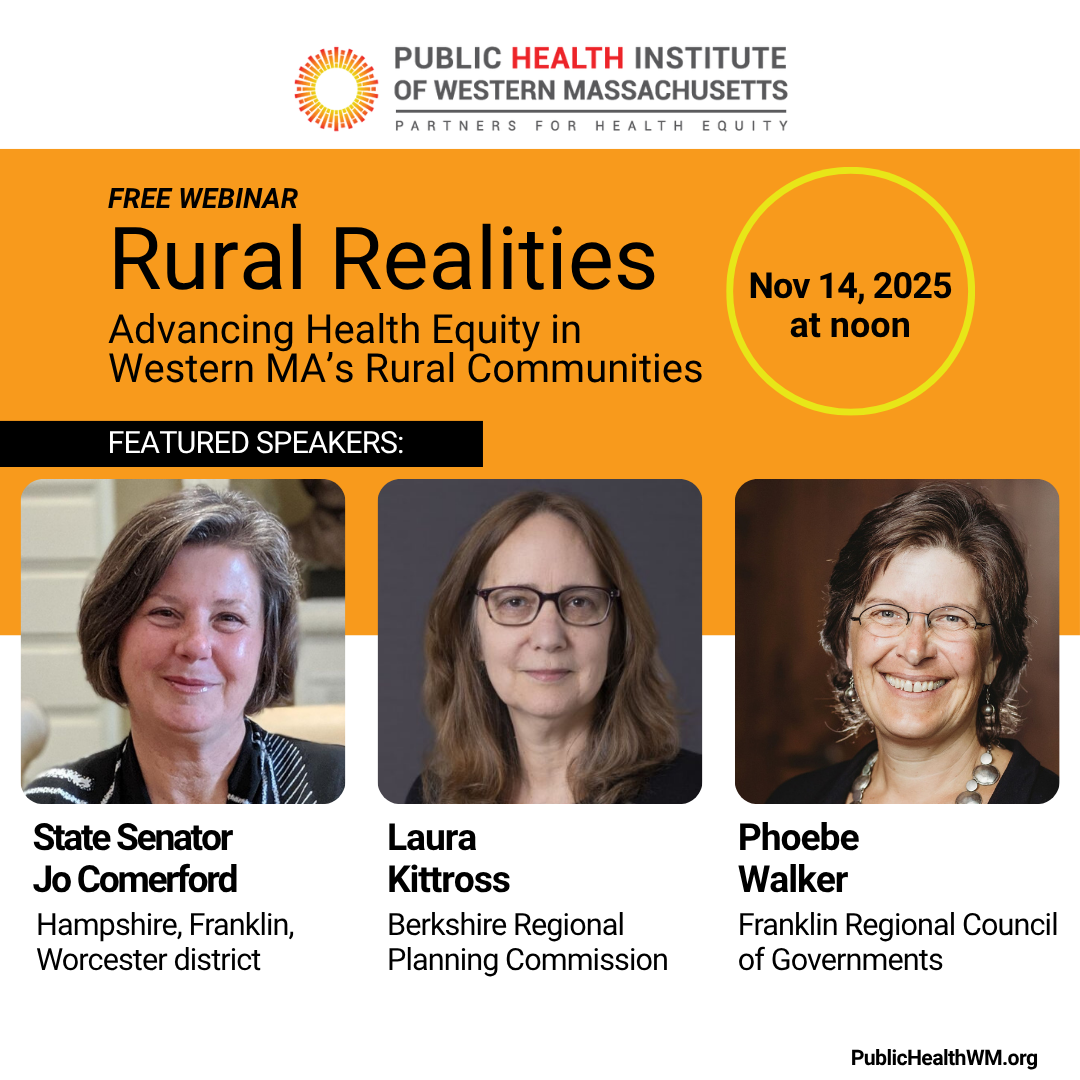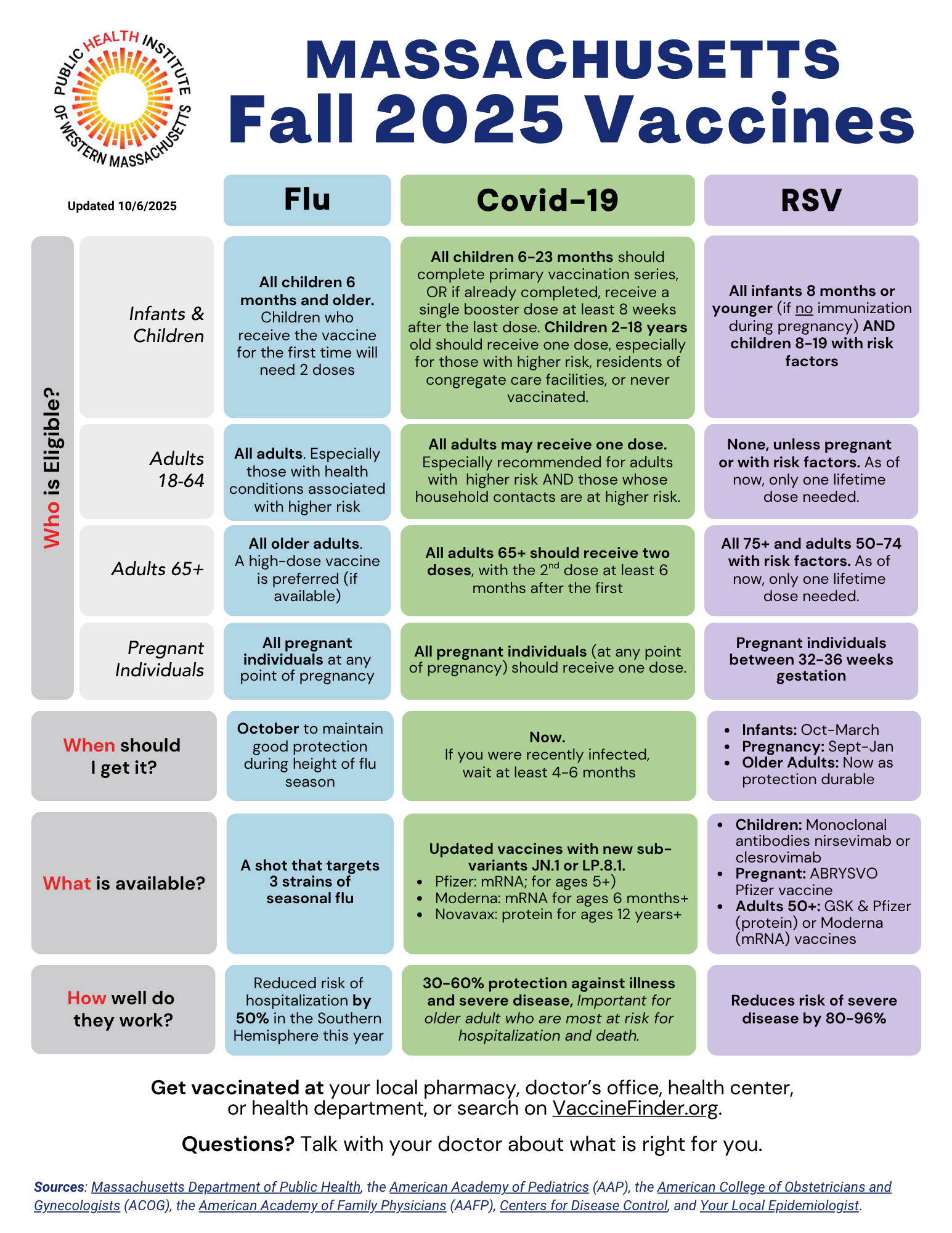Western MA COVID-19 County Data Dashboard 8/15/2020
August 15, 2020

Download a PDF of the Western MA COVID-19 County Data Dashboard.
Data Sources:
- County & state data (except state death data) from MDPH COVID-19 Weekly Public Health Report: data for 8/2-8/15 pulled from 8/19/20 report; prior two week period (7/26-8/8) pulled from 8/12/20 report.
- State death and all cumulative death data from MDPH COVID-19 Daily Dashboard 8/19/20.
Note: MDPH changed their reporting of county data on 8/12/20. Previously, county cases were in the Daily COVID-19 Dashboard report and included probable and confirmed cases. Beginning 8/12/20, county data is now reported in the Weekly COVID-19 report and cases only include confirmed cases. Thus, we are not currently able to show new case county-level data and other county-level data over time for periods prior to 8/12/20.
share this
Related Articles

Join us for a free webinar, November 14, 2025, from 12:00 - 1:15 pm, exploring the unique challenges and strengths of rural communities across Western Massachusetts, featuring State Senator Jo Comerford , Hampshire, Franklin, Worcester district, Laura Kittross , Berkshire Regional Planning Commission, and Phoebe Walker, Franklin Regional Council of Governments.



